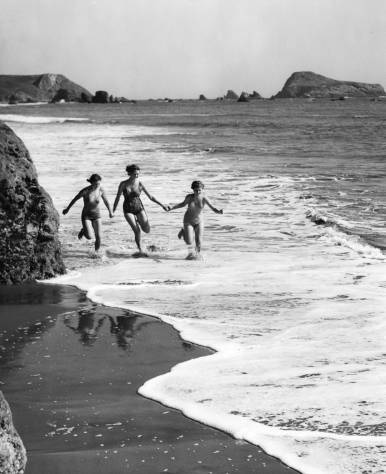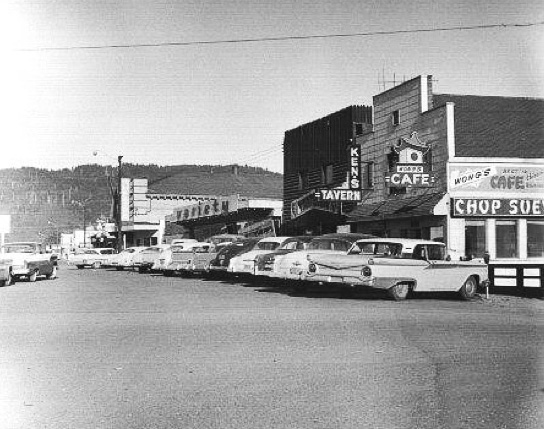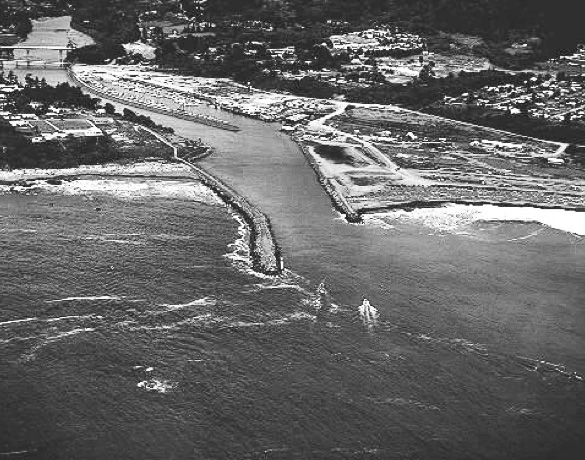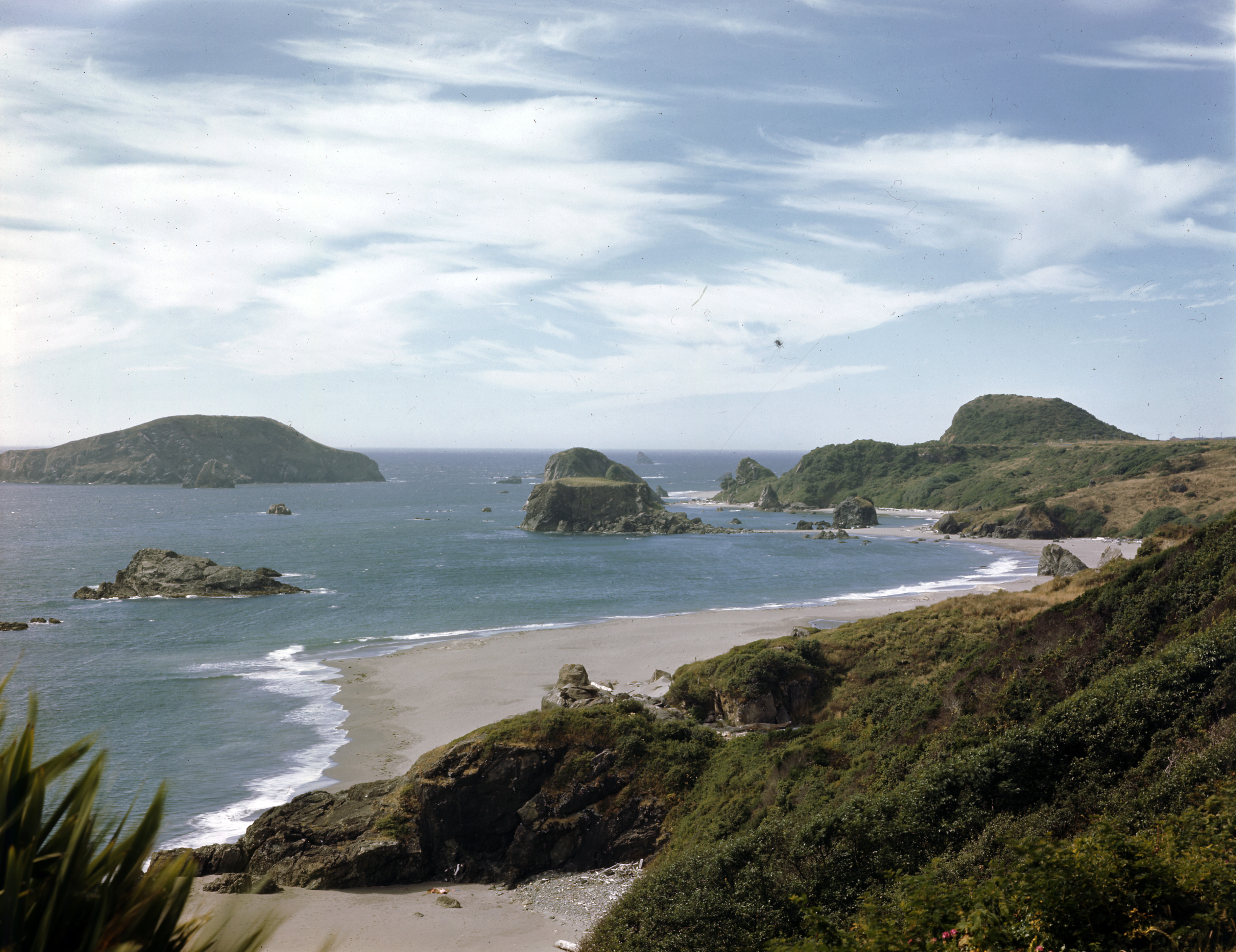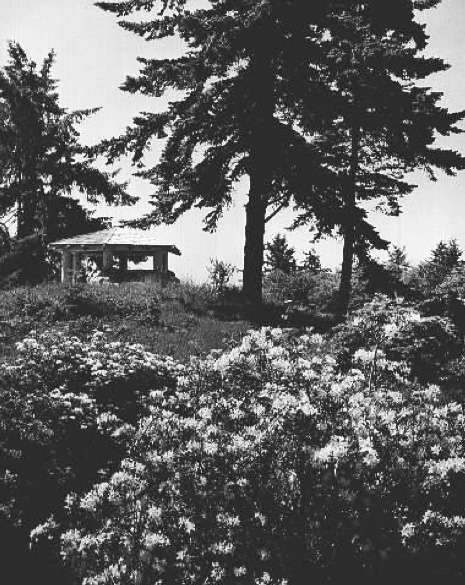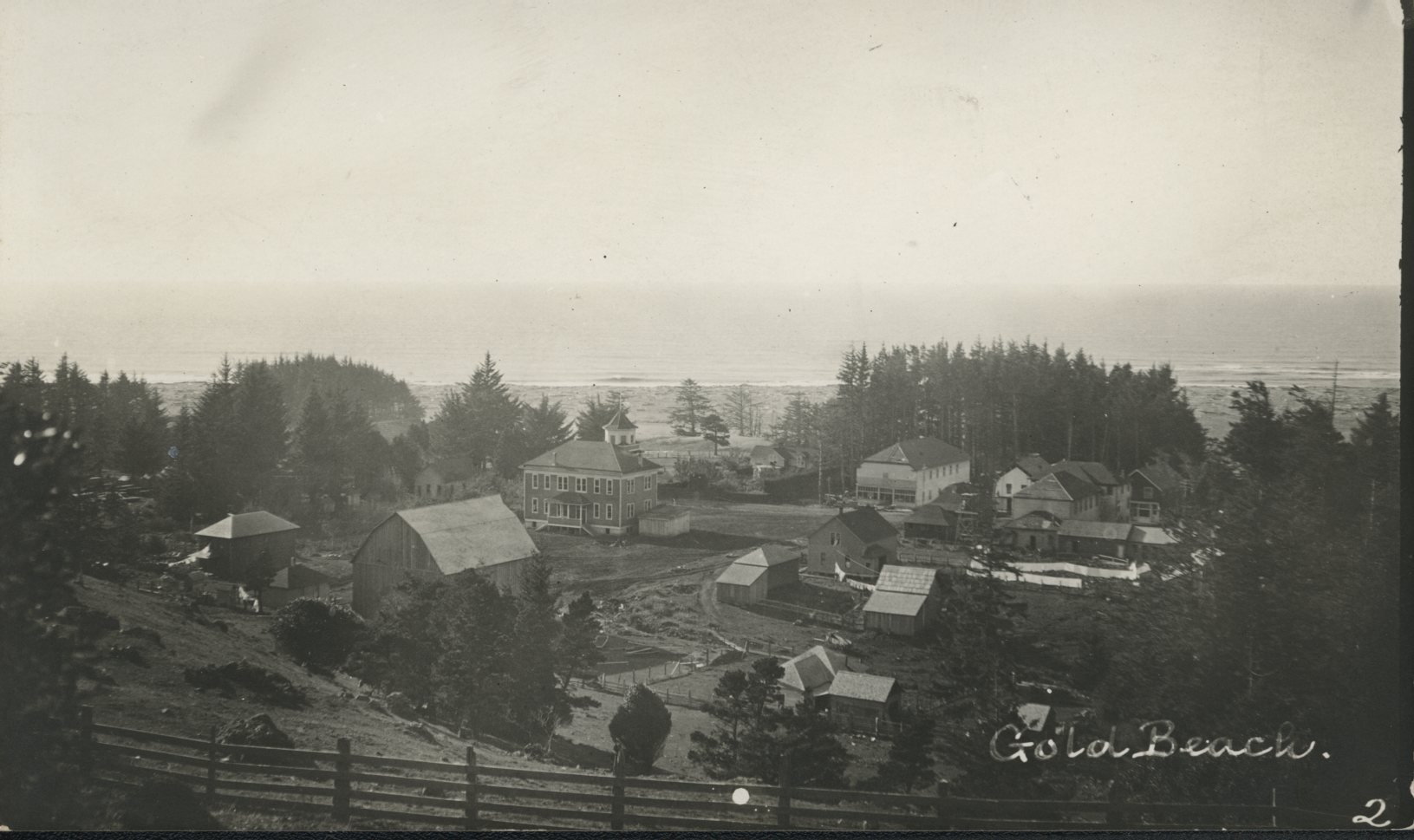Brookings is located at the mouth of the Chetco River, on the southern-most Oregon Coast. Originally situated exclusively on the north bank of the river, the town's suburbs expanded across the river to include the independent community of Harbor.
Situated near the former site of a small 1890s-1900s hamlet called “Chetco,” Brookings began in 1913 as a redwood-logging company town by the California and Oregon Lumber Company (C&O); it was named for one of the firm’s owners, John Brookings. His brother Robert—whose fortune founded the Brookings Institution in Washington, D.C.—was also involved in the enterprise, and it was at his insistence that the planned community included a unifying architectural theme for its major buildings. The designer was prominent California architect Bernard Maybeck.
Through World War I, C&O’s sawmill produced high-value lumber from Douglas-fir of the lower Checto drainage and redwoods of the lower Smith River country, the latter logs coming north to the mill along the nearly level coastal plain by means of the company’s railroad. Almost completely isolated from land-based transport until construction of the Roosevelt Highway in the 1920s and 1930s (now U.S. Highway 101), the town depended on the weekly supply boat from the south for mail, fresh groceries, and the like. Stormy weather could delay its arrival for days at a time. In 1920, the population clustered at the mouth of the Chetco River approached a thousand people.
When C&O terminated its timber operations and closed the mill in 1925, the town fell on hard times; by 1930, the population had declined to 250. A small fishing fleet worked out of Harbor, and in the 1930s Brookings benefited from the production of Easter lily bulbs, which were grown on the fertile coastal-terrace soils. As late as the 1990s, the area’s lily farmers produced well over 90 percent of the world’s Easter lily bulb crop.
Following World War II, when truck roads were built into the previously unreachable timber in the rugged mountains east of Brookings, large mills were again built near the town. But it was the building of Highway 101, and the resulting tourist economy, that proved the town’s salvation.
Brookings gained national attention in 1962, when organizers of the town’s annual Azalea Festival invited former Japanese naval pilot Nobuo Fujita to be the parade’s grand marshal. In 1942, Fujita had catapulted his small floatplane from the deck of a Japanese submarine and had flown over the town on a daring flight to bomb the redwood forests southeast of Brookings. It was the first and one of only two enemy aerial bombings of the U.S. mainland. Although some local veterans threatened violence if Fujita visited Brookings, the 1962 event was successful and Fujita presented the city with his heirloom samurai sword (now on display in the Chetco Community Public Library, Brookings). The city declared him an honorary citizen, and he visited Brookings several more times before his death in 1997.
In 2020, Brookings had a population of 6,744 people. Since the 1980s, with its warm coastal climate, the town has become popular with retirees, from people of modest economic means to former Hollywood director Elmo Williams, film editor for the classic Western High Noon. With wood products on the wane, a number of Brookings residents now commute to work a few miles south to the massive Pelican Bay, California, maximum-security prison.
-
![Racing the waves near Brookings, 1930s.]()
Brookings, swimming near, P218RIG0793.
Racing the waves near Brookings, 1930s. Photo Ralph Gifford, courtesy Oreg. State Univ. Libr., Gifford Photo. Collec., P218RIG0793
-
![Brookings, Sep. 1960.]()
Brookings, street view 1, Sep 1960, 5550.
Brookings, Sep. 1960. Photo Ben Maxwell, courtesy Salem Public Libr., 5550
-
![Brookings and mouth of the Chetco River, May 1972.]()
Brookings, mouth of Chetco, 1972, OMB0015.
Brookings and mouth of the Chetco River, May 1972. Oreg. State Archives, Oreg. Dept. of Trans., OMB0015
-
![Infrared image of Brookings and Chetco Cove, June 1993.]()
Brookings, mouth of Chetco, infrared, 1993, ODFW 1-11.
Infrared image of Brookings and Chetco Cove, June 1993. Oreg. State Univ. Libr. and Oreg. Dept. of Fish and Wildlife, ODFW 1-11
-
![Brookings, 1942.]()
Brookings, street view 2, 1942, OHD1920.
Brookings, 1942. Oreg. State Archives, Oreg. Dept. of Trans., OHD1920
-
![Brookings City Jail.]()
Brookings, city jail, mdr00400.
Brookings City Jail. Photo Andrew M. Vincent, courtesy Univ. of Oreg., mdr00400
-
![Oregon coast from Hwy. 101 near Brookings, 1940.]()
Brookings, coast view near, 1940, P218_RIG.
Oregon coast from Hwy. 101 near Brookings, 1940. Photo Ralph Gifford, courtesy Oreg. State Univ. Libr., Gifford Photo. Collec., P218_RIG
-
![Coast at Boardman State Park near Brookings.]()
Boardman Park, near Brookings, P057acc91156.
Coast at Boardman State Park near Brookings. Photo Oreg. State Hwy Dept., courtesy Oreg. State Univ. Libr., P057acc91156
-
![Azalea State Park near Brookings, 1942.]()
Brookings, Azalea State Park, 1942, OHD1786.
Azalea State Park near Brookings, 1942. Photo Oreg. State Hwy Dept., courtesy Oreg. State Univ. Libr., OHD1786
-
![Easter Lilies near Brookings, 1941.]()
Brookings, easter lilies, 1941, 7752.
Easter Lilies near Brookings, 1941. Photo Ben Maxwell, courtesy Salem Public Libr., 7752
-
![Harris State Park near Brookings, 1942.]()
Brookings, Harris State Park, 1942, OHD1795.5.
Harris State Park near Brookings, 1942. Photo Oreg. State Hwy Dept., courtesy Oreg. State Univ. Libr., OHD1795.5
-
![Natural bridge on the Oregon coast near Brookings, 1940.]()
Brookings, natural bridge, 1940, P218_RIG_0738.
Natural bridge on the Oregon coast near Brookings, 1940. Photo Ralph Gifford, courtesy Oreg. State Univ. Libr., Gifford Photo. Collec.,P218_RIG_0738
Related Entries
-
![Gold Beach]()
Gold Beach
The City of Gold Beach sits just south of the Rogue River, about forty …
-
![US 101 (Oregon Coast Highway)]()
US 101 (Oregon Coast Highway)
Many places on the Oregon coast were virtually inaccessible in the earl…
Related Historical Records
Map This on the Oregon History WayFinder
The Oregon History Wayfinder is an interactive map that identifies significant places, people, and events in Oregon history.
Further Reading
Nathan Douthit. A Guide to Oregon South Coast History. Corvallis: Oregon State University Press, 1999.
William McCash. Bombs Over Brookings. Bend, OR: Maverick Publications, 2005.

